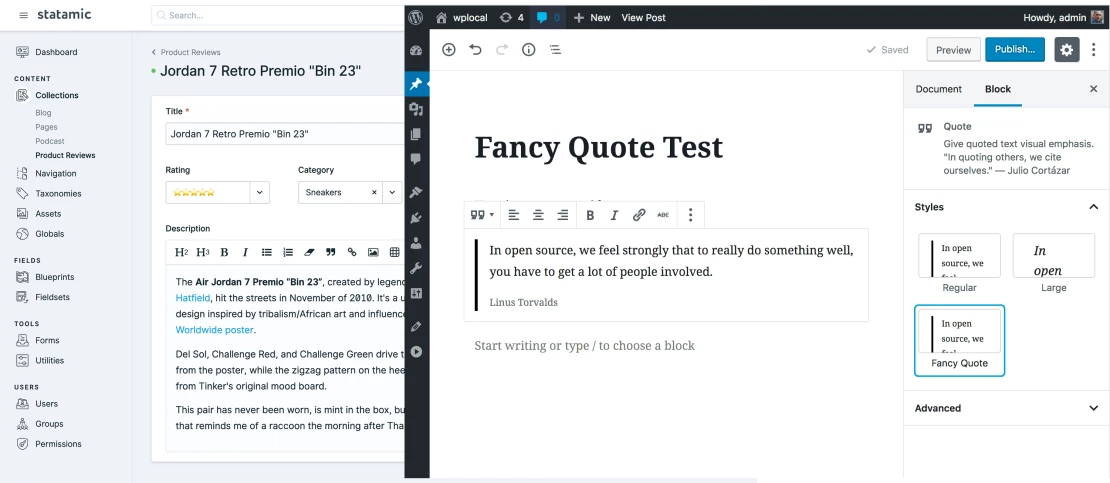Statamic for WordPress developers - intro

Over the Christmas table, I got the idea to create a series of articles about Statamic but with WordPress developers in mind. In this part, I want to mostly focus on why I want to write this series and what you can expect from it.
Why do I like Statamic and does this mean I hate WordPress?
Let's start with the second part - I still enjoy WordPress, I still love the community around it, I'm constantly observing what is happening there, and tinkering with it. So if you thought, you wouldn't see me at WordCamps, you were wrong.
On the other hand, I also enjoy discovering other CMSs. One of the things I loved in Statamic, was the fact that it had this vibe of... my WordPress stack. As some of you know I'm rather conservative about my WordPress stack - this stack on the other hand is quite unorthodox compared to most WordPress installs. It consists of:
Bedrock - so I can use the power of composer in WordPress
Timber - so I can benefit from Twig in WordPress
Advanced Custom Fields - so I can prepare more complex data structures
Tailwind CSS- my wife uses it, so...
All of those things are available in Statatamic:
it's powered by composer
there is a templating engine called Antlers, which is similar to Twig
I can build all those complex data structures too (but without any plugin)
Laravel developers love Tailwind too, although I can use whatever I want
On the other hand, Statamic offers a few more cool features:
by default it uses files to store data - for most websites that approach (together with git) is much better and safer than using a database
it's built on the shoulders of a popular PHP framework - Laravel
the developer experience is better
it's possible to transform it to your needs

Why do I want to write this series of articles?
Apart from the fact that I promised myself to write 20 articles on this blog, I think that Statamic is just a great CMS that doesn't get all the attention it should get. Also, learning something new and exploring new worlds is valuable for every developer. I hope that even if you don't fall in love with Statamic as I did, you'll discover some solutions that WordPress doesn't have and create a plugin to fix it.
What's the plan?
At the moment I would like to concentrate on:
Intro - this article
Key differences & similarities between those CMSs and installation
The admin panel, collections (post types in WP), and data modeling (the built-in ACF)
Taxonomies, navigation, assets, globals
Using Antlers AKA building the theme
Forms
Statamic as a Headless CMS
Custom tags
Custom fields
I hope you'll enjoy this. I will try to reference how all of those things are done in WordPress, so you can always see the difference.
On the other hand, I won't dive deeper into Laravel-related stuff. Why? First of all, I don't feel I'm a person for the job here, and also because I don't think it would bring additional value. I won't dive into the addons territory too, the same way I don't like to write about plugins - just pick the ones that fit you best.
How not to miss an article?
There are four ways:
just visit my blog once a week and check if a new article is added (not recommended)
write a script that will do it for you (better, but still meh)
follow me on Twitter (quite OK, but you might still miss it)
subscribe to my newsletter - not only you'll get notifications about new blog posts, but you'll also receive a cool set of weekly links (highly recommended)
Other chapters
Get updated about new blog posts
No spam